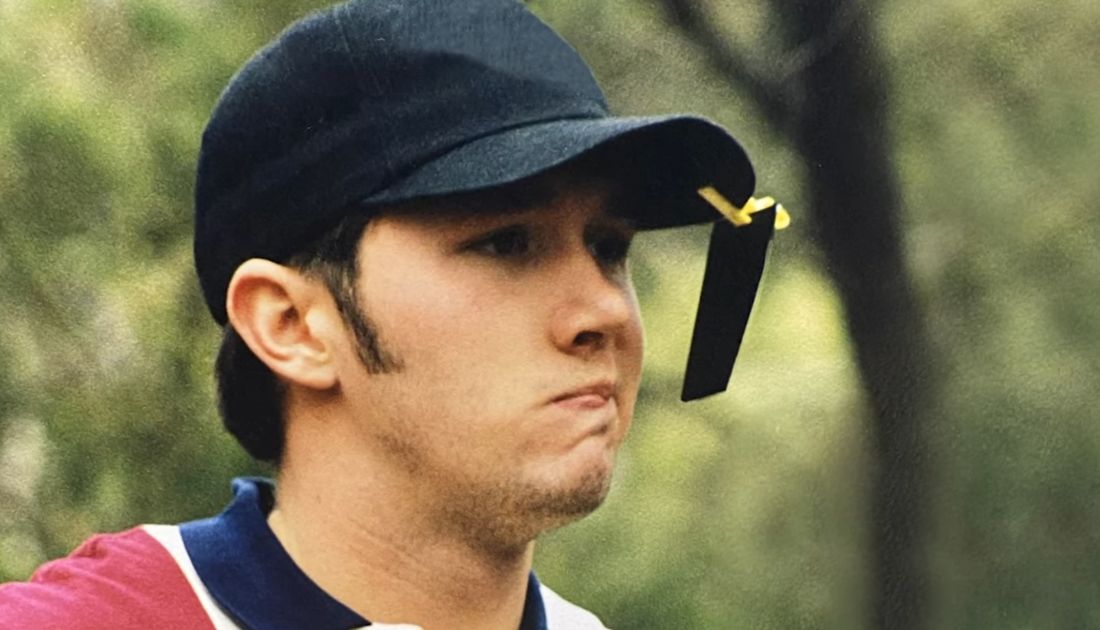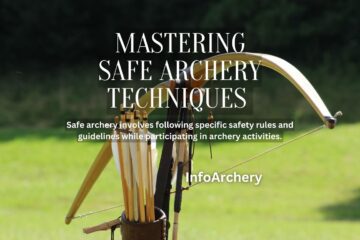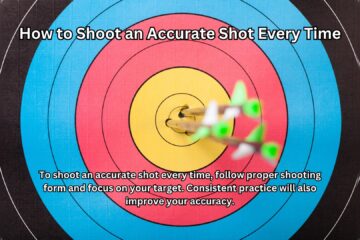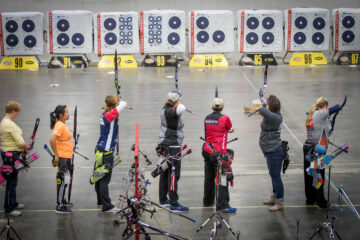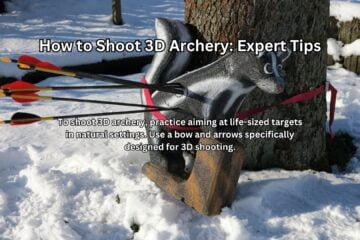Yes, you can shoot with your non-dominant eye. However, it may require some practice to develop good shooting form and accuracy.
Shooting with your non-dominant eye may be necessary if your dominant eye has poor vision or is injured. Some shooters even prefer to use their non-dominant eye for increased accuracy or to better line up with their dominant hand. It’s important to experiment and find what works best for you, but make sure to always practice proper safety measures and techniques.
With time and practice, shooting with your non-dominant eye can become just as comfortable and natural as shooting with your dominant eye.
Dominant vs Non-Dominant Eye
Can I shoot with my non dominant eye: dominant vs non-dominant eye
When it comes to shooting, many people do not realize that the dominant vs. non-dominant eye can have a significant impact on accuracy. In this post, we will explore the difference between the two eyes, how to determine which eye is dominant, and why it’s important to know your dominant eye.
Explanation Of The Difference Between The Two Eyes:
- The dominant eye is the eye that the brain prioritizes when processing visual information. This eye will automatically line up with the target, making aiming easier and more accurate.
- The non-dominant eye, on the other hand, tends to create more peripheral vision, and may not aim directly at the target. This can lead to misalignment and compromised accuracy.
- Shooting with the non-dominant eye may lead to discomfort and eye strain due to the unfamiliar motion required to aim.
How To Determine Which Eye Is Dominant:
- There are a few different methods to determine which eye is dominant. One easy way is to stretch your arms out in front of you and make a triangle with your thumbs and index fingers.
- Look through the triangle with both eyes open at a distant object, and then close one eye at a time. The eye that keeps the object in the center of the triangle is your dominant eye.
Why It’s Important To Know Your Dominant Eye:
- Knowing your dominant eye is crucial for shooting accurately and consistently.
- When shooting a firearm, rifle, pistol, or bow and arrow, using your dominant eye will allow for better aim and more successful shots.
- By using the proper eye for aiming, you can prevent eye strain and reduce the likelihood of making mistakes caused by misalignment.
Shooting with your non-dominant eye may be uncomfortable, inaccurate, and lead to eyestrain. By taking the time to determine which eye is dominant, you can improve your accuracy, eliminate eye strain, and become a more successful shot. Remember, practice makes perfect!
Benefits Of Shooting With Your Non-Dominant Eye
Can I shoot with my non dominant eye? Benefits of shooting with your non-dominant eye
Many people assume that in any given sport or activity, one should always use their dominant hand or eye. However, in the world of shooting, that may not always be the case. In fact, there are several benefits to using your non-dominant eye when shooting.
In this section, we will explore some of these benefits, including improved peripheral vision and depth perception, increased accuracy and consistency, reduced eye fatigue, and examples of athletes who have successfully used this technique.
Improved Peripheral Vision And Depth Perception
When using your non-dominant eye for shooting, you are effectively utilizing both eyes to enhance your visual awareness. By doing so, you can achieve a wider field of view and achieve better depth perception. This can help you better calculate the distance between you and your target and make more accurate shots.
- Utilizing both eyes enhances your visual awareness.
- Achieve a wider field of view.
- Achieve better depth perception.
Increased Accuracy And Consistency
Using your non-dominant eye can also increase your accuracy and consistency when shooting. This is because your dominant eye may be more prone to errors and limitations due to overuse or other factors. By switching to your non-dominant eye, you are allowing yourself to utilize a fresh and under-utilized visual perspective, which may yield better results.
- Using non-dominant eye can increase accuracy.
- Allows for fresh and under-utilized visual perspective.
- Yield better results.
Reduced Eye Fatigue
When shooting, eye fatigue can be a major issue for many individuals. Over time, this can cause strain and discomfort, making it difficult to maintain focus and accuracy. By utilizing your non-dominant eye, you may be able to reduce or even eliminate some of this strain, as your eyes will be sharing the workload more effectively.
- Using non-dominant eye may reduce eye fatigue.
- Eyes share workload more effectively.
Examples Of Athletes Who Have Successfully Used This Technique
Many famous athletes have used their non-dominant eyes when shooting, with great success. For example, NBA superstar LeBron James is known for using his left eye when shooting and aiming at the basket. Olympic archer Brady Ellison has also noted that he uses his non-dominant eye when shooting, despite being right-eye dominant.
By following in the footsteps of these accomplished athletes, you may be able to achieve greater success in your own shooting endeavors.
- Lebron James uses non-dominant eye for shooting.
- Olympic archer Brady Ellison uses non-dominant eyes as well.
- Following in footsteps of accomplished athletes can yield success.
Shooting with your non-dominant eye can offer many benefits, including improved vision, accuracy, consistency, and reduced eye fatigue. By understanding these benefits and examples of successful athletes who have done the same, you can optimize your own shooting performance and achieve great success.
How To Train Your Non-Dominant Eye
Can I shoot with my non dominant eye – how to train your non-dominant eye
If you are a shooter, you might have wondered if it’s possible to shoot with your non-dominant eye. The answer is yes, and in fact, many expert marksmen suggest training your non-dominant eye for better accuracy. We will discuss how to train your non-dominant eye and offer tips for incorporating this technique into your shooting routine.
Exercises For Developing Your Non-Dominant Eye
Developing your non-dominant eye requires a series of exercises that are designed to build muscle memory and improve your focus. Here are some exercises:
- Start by looking at an object with both eyes open and then close your dominant eye.
- Next, try to maintain the same focus on the object while keeping your non-dominant eye open. This exercise will help you develop better depth perception.
- Another exercise you can try is to look at a target with your dominant eye and then try to replicate the same focus with your non-dominant eye. Keep practicing until you are comfortable with both eyes open.
Tips For Incorporating This Technique Into Your Shooting Routine
Incorporating non-dominant eye training into your shooting routine might seem daunting, but it’s an essential step toward improving your accuracy. Here are some tips to help you:
- Begin by practicing with your non-dominant eye while dry firing. This way, you can focus on your aim technique without worrying about recoil or noise.
- As you gain confidence, start incorporating live firing with your non-dominant eye. Take the time to adjust your stance and grip as needed.
- Be patient and take small steps. It takes time to train your non-dominant eye, so don’t rush the process. Break down the exercises in small increments and gradually build up to more complex tasks.
Training your non-dominant eye is a key technique that can improve your shooting accuracy. With a little effort and dedication, you can master this skill and take your shooting to a whole new level.
Potential Challenges And How To Overcome Them
Can I shoot with my non dominant eye? Potential challenges and how to overcome them
Shooting with your non-dominant eye can be a challenging task for both new and experienced shooters. It requires constant practice and perseverance to master. Here are some common obstacles you may face and strategies you can use to overcome them:
Common Obstacles To Shooting With Your Non-Dominant Eye
- Difficulty in adjusting to a new aiming method: Since shooting with your non-dominant eye is fundamentally different from what you’re used to, you may struggle to find a comfortable shooting position and aim accurately.
- Eye fatigue and strain: You may experience eye strain or fatigue when straining to use your non-dominant eye over long periods of time, leading to headaches or decreased performance.
Strategies For Overcoming These Challenges
- Practice using your non-dominant eye regularly: Begin with simple drills, such as dry-firing (practicing firing an empty weapon with focus on technique and trigger pull) and gradually move on to more advanced techniques.
- Experiment with different shooting stances: Adjusting your stance can help find a comfortable stance and body position that will reduce eye fatigue and improve accuracy.
- Use both eyes even when shooting with your non-dominant eye: Shooting with both eyes can create valuable spatial awareness in addition to reducing eye fatigue.
- Adjust your gun sights: If you are unable to adequately align your gun sights using your non-dominant eye, adjusting them can help create the ideal sight picture for you.
Ways To Maintain Motivation And Stay Persistent In Training
- Set achievable goals: Keep a log of your progress and set attainable goals for yourself. Celebrate your milestones, no matter how small they may be.
- Keep training regimens short: As the saying goes, “quality over quantity.” Split your training sessions into shorter, more frequent sessions, so as to keep them interesting and maintain your focus.
- Seek feedback: Ask for feedback from peers or instructors. Take note of constructive feedback to improve your shooting techniques.
Shooting with your non-dominant eye may present a unique set of challenges, but with practice, patience, and persistence, you can overcome them. Remember to keep your training sessions short, set achievable goals, and seek feedback from others to maintain your motivation and stay on track toward mastery.
Frequently Asked Questions Of Can I Shoot With My Non Dominant Eye
Can I Shoot With My Non-Dominant Eye Even If I Am Right-Handed?
Yes, you can. In fact, many right-handed shooters prefer to shoot with their left eye. It takes practice to master, but it can be beneficial in certain situations.
Will Shooting With My Non-Dominant Eye Affect My Accuracy?
Initially, you may experience a decrease in accuracy. However, with practice, you can train your non-dominant eye to become just as accurate.
How Can I Tell Which Is My Dominant Eye?
One way to test for your dominant eye is to form a triangle with your thumbs and index fingers. Look through the triangle with both eyes open and close one eye, then the other. Your dominant eye is the one that stays on the target.
Are There Any Benefits To Shooting With My Non-Dominant Eye?
Shooting with your non-dominant eye can allow you to shoot from cover on the opposite side of your body, making you a harder target for your opponent to hit.
Should I Switch To Shooting With My Non-Dominant Eye If I’M Already An Experienced Shooter?
If you’re already an experienced shooter, there’s no need to switch to shooting with your non-dominant eye unless you want to challenge yourself or feel it would benefit you in certain situations.
Conclusion
As we conclude, it’s evident that shooting with your non-dominant eye is a skill that can be learned with time and practice. It’s a great advantage to know how to shoot with both eyes since it opens up more opportunities and options when it comes to firearms.
By learning how to shoot with your non-dominant eye, you are more aware of your surroundings, which helps improve situational awareness. It also helps create a balance between both eyes, which enhances overall shooting precision and accuracy. However, it’s essential to remember that everyone has different experiences and different results, so it’s best to experiment and train with both eyes.
With time and persistence, you can master shooting with your non-dominant eye, and it may become another valuable skill in your shooting toolbox. Keep practicing and shooting happy!

